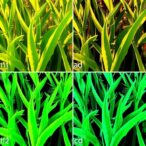Swiss researchers have developed a new method to enhance Raman calibration datasets used to create predictive models. The researchers, based at the University of Applied Sciences Northwestern Switzerland (FHNW) near Basel, say the new technique should help to reduce the efforts to calibrate some types of models for interpreting Raman spectra.
The new method is an extension of a previous study to create a Raman spectra dataset by measuring samples physically spiked with analytes from different bioprocesses.
“To train good Raman models, you need large datasets from real processes, and that can be time-consuming and expensive,” explains Vicent Borras, PhD, a researcher from FHNW, who co-led the study.
The team’s new approach combines experimental data with Raman spectra measurements of analytes, such as glucose and lactate, dissolved in water to augment calibration datasets in silico.
According to Borras, experiments in water help to create a synthetic spectral library (SSL) to calibrate Partial Least Square (PLS) models, generating very similar results as with purely experimental data.
“The fingerprint of glucose, for example, in water and in a bioreactor, is similar enough that you can combine measurements in water with bioprocess data,” he says.
According to Borras and co-author Louis Hellequin, a PhD student at FHNW, the in silico approach could also benefit large machine learning models that require very large datasets during calibration.
“I think, in the past, people stuck to classical workflow they knew were working and, thus, did not consider new approaches” Hellequin says.
The team used the Raman spectra they created in silico to calibrate PLS models, which they used to predict how different analyte concentrations changed over real perfusion bioprocesses. They demonstrated that models trained with in silico data are as accurate as those trained purely with experimental Raman spectra, achieving similar accuracy with less experimental input.
“We could extend the existing datasets that people have, even if these are small datasets,” says Borras.
The team now hopes to expand their work through industry collaborations.
“We’re always looking at new technology and how to implement them in a more efficient way, so we’re going to be seeing if we can repeat this methodology with different spectroscopic techniques,” Hellequin adds.
Their research is outlined in a recent paper published in Analytical and Bioanalytical Chemistry. Borras will also speak at the 2026 Bioprocessing Summit Europe.



